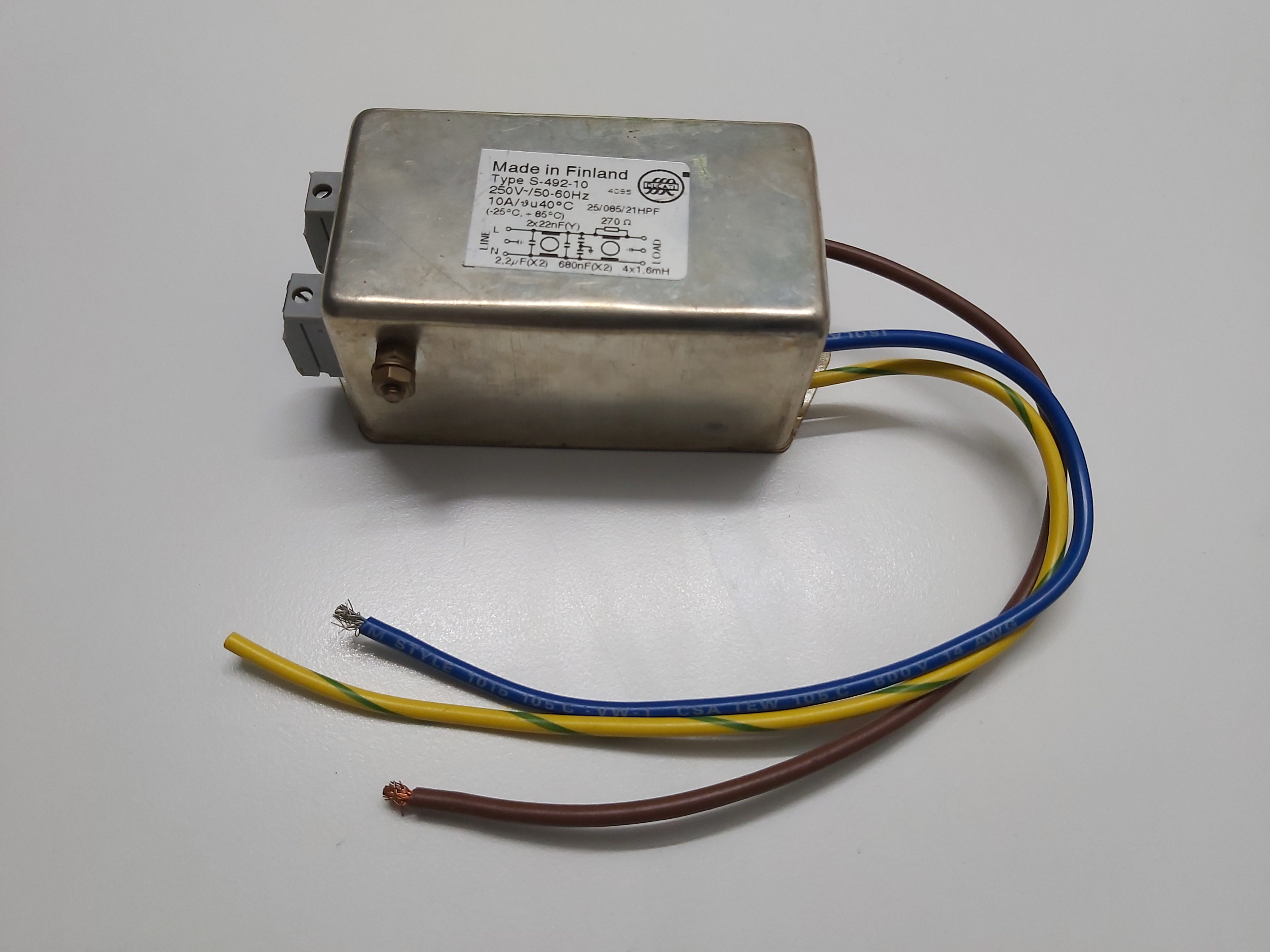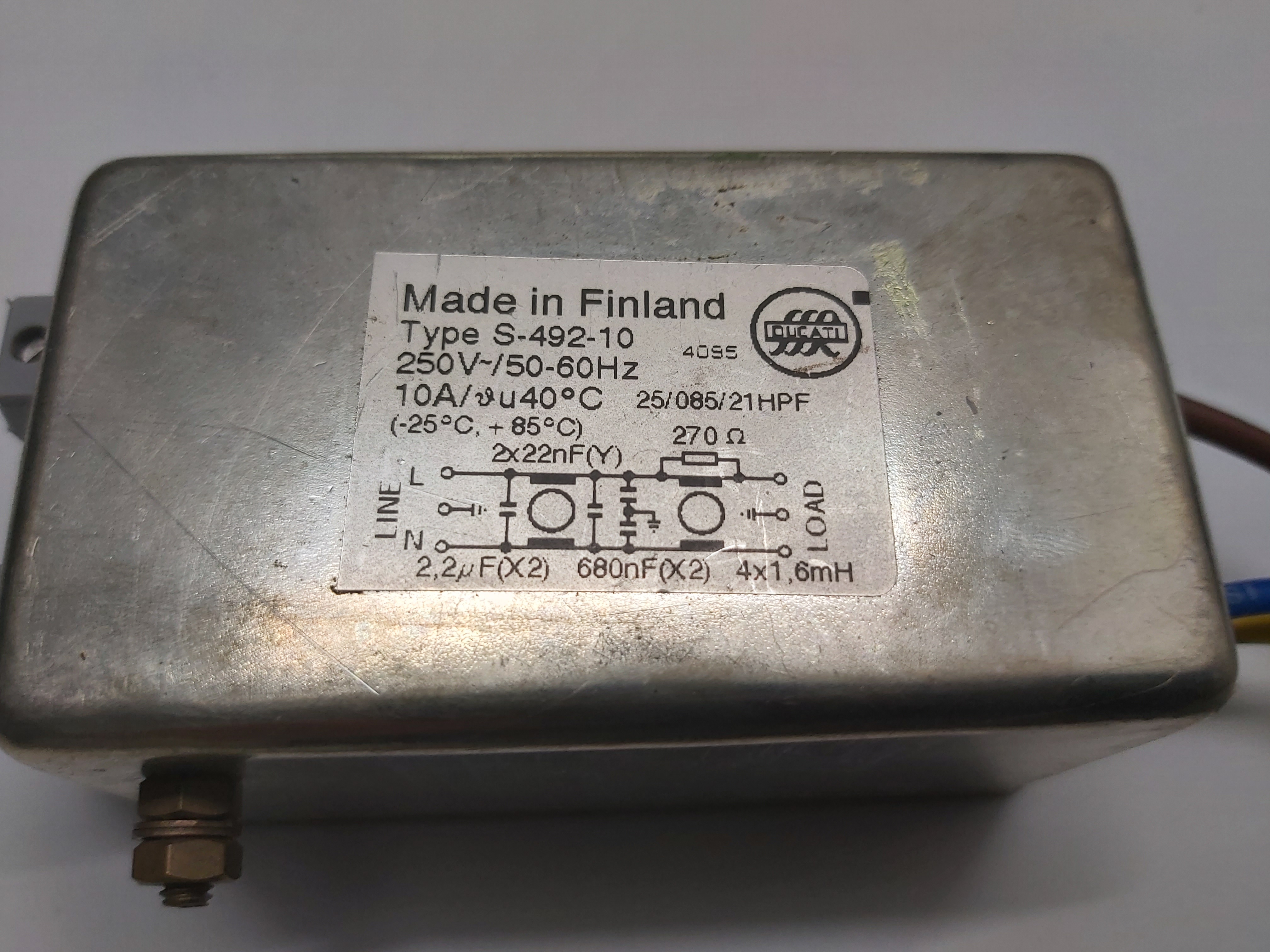Because of the presence of mains current in mains-powered audio equipment as well as ubiquitous AC electromagnetic fields from nearby appliances and wiring, 50/60 Hz electrical noise can get into audio systems, and is heard as mains hum from their speakers.
In addition to mains frequency humming, the mains power can also contain higher frequency noise that is often referred as EMI (Electromagnetic Interference) noise. Problems range from straightforward ‘hums’ (which normally include various levels of the mains harmonics, such as 50Hz, 100Hz, 150Hz, and so on in the UK, or 60Hz and higher multiples in the US), to a wide range of scratches, ticking, buzzing and other digital gremlins.
Don’t let buzz, hum, or hiss ruin your AV experience. Check that your wiring is is right and after that if problem persists turn to look mains power quality. It’s only worth ‘cleaning up the power signal’ if it’s dirty, and a huge number of background noise problems are caused not by mucky mains, but by audio wiring that results in ground loops. This is the source of lots of unwanted nasties that sneak into your audio signals.
There are many products advertised to help power noise issues. Advertised tools include mains filters, isolation transformers. UPS devices and even special power regeneration devices. Slightly cheaper than an online UPS, but absolutely effective against all kinds of line noise is an isolation transformer.
To get idea of mains power noise take a look at Electrical noise on your power line video
One EMI meter that is commonly used to measure mains power noise is Greenwave Broadband EMI Dirty Electricity Meter sold at Amazon. Greenwave Broadband EMI Dirty Electricity Meter measures the dirty electricity (a.k.a. electrical noise, line noise, power line EMI) present on the wiring in buildings. It is designed to easily compare EMI levels before and after installing dirty electricity filters. Simply plug the meter into electrical outlets to get measurements. This instument says that it measures a broad range of dirty electricity frequencies at approximately 3 kHz — 10 MHz frequency range. The meter includes a speaker that lets you listen to the dirty electricity on a circuit and hear noise to decrease as filters are installed.
Listen To Dirty Electricity with Greenwave EMI Meter. Hear the Difference Greenwave Filters Make!
There are also other mains EMI meter brands. Ebay sells also OLED Digital AC Noise Meter EMI Tester Wideband AC Power Ripple Analyzer and similar.
There are many companies that sell mains filters that promise to make wonders in the mains power filtering. Not all of them seem to live up to their promises, and it seems you need to be careful what you buy. And you should test the product before buying.
PS Audio is selling incredibly small and advertised to be effective noise harvesting instrument converts damaging line noise into harmless light. Their video What’s a Noise Harvester? tells about the product and promises a lot:
The question is if PS Audio’s product is incredibly small and effective noise harvesting is as effective as promised. How does it work and how effective is it? It seems that based the on several tests it is not very effective.
PS Audio Noise Harvester Review (AC Filter)
In the video above Amir dropping the Hammer on the Snake Oil. According to this video this looks like to be true snake oil…that real living snakes.. wouldn’t want to go near..but some audiophiles… really like snake oil.
Does PS Audio Noise Harvester Really Work For Cleaner Electricity video shows a quick test to show whether or not it really does what the manufacturer says it does.
Video comments: Ps audio, ” it does something “. Yes it flashes a blue light. AudioScienceReview has measured this device. Thank you for this review!
Audio Science Review on PS Audio Noise Harvester AC Cleaner Review has lots of measurement results that do not seem to be promising on this filter performance. Audio Science Review proved with measurements that this product does absolutely nothing useful. In some of the tests made the noise actually went up when you plugged in the snake oil.
Collinsaudio took some measurements and wrote a report that has also some technical details what is inside the device. If anything this devise adds switching noise, because inside there is a transistor, triac, inductor (choke) and a few caps.
“If I were to speculate on the operating principles of this device, I wouldimagine that the power line is AC coupled then applied to the primary of the toriodialtransformer. The secondary is then connected to some type ofhigh-pass filt er an d fin ally t o a mo n o-stablethat flash es the LED.While it’s somewhat hard to imagine the benefits of this type of line filter, I was unable see any objective improvement with the Noise Harvester™.”
This seems be be pretty muuch purely a psychological device. This seems to be audiophoolery specifically “designed” to rip off gullible people. Brand should be more like BS Audio.
A real effective mains noise filters has power flowing through it and has several LC filter stages. Something like this:


111 Comments
Tomi Engdahl says:
DIY Hifi emi filter
https://youtu.be/yFjMZhhj9PE?si=ETq9OAht7SDA7DEg
Tomi Engdahl says:
Internal structure: Nordost QRT Qv2 AC Line Harmonizer | odear
https://m.youtube.com/watch?si=lekfUBqXqTiDc4tO&fbclid=IwZXh0bgNhZW0CMTEAAR0RgYGu2oMkreKaiL9iO44jiOoeMSofVG56SedEruhGbey4twBFwbc95Ms_aem_LpOvUPMP54TZkf8-N7270g&v=uw9xdTjZPBQ&feature=youtu.be
Tomi Engdahl says:
Ilmainen sähköisessä muodossa oleva kirja EMC-suunnittelusta https://link.springer.com/book/10.1007/978-3-031-14186-7?fbclid=IwY2xjawER_vVleHRuA2FlbQIxMAABHYi6VAyR6bWIBVuCCO3GYF-ku2Thtd56pMFLTfdByy0RpzT53ESR-OT5og_aem_rfR3Fp-8cDaLfZEDqhPd0w
Liitteeet J ja K kertovat EMC-vaatimukset. Ellei niitä ymmärrä, pitää lukea kirja siihen saakka. Kirjan lukemalla saa myös osviittaa sihen, miten vaatimukset voidaan täyttää.
Tomi Engdahl says:
Thomas Anderssen lainaus linkkaamastani kirjasta:
AC mains power filters. AC mains power filters require capacitors with a
sufficient safety rating (IEC 60384-14; USA: UL 1414 and UL 1283; Canada:
CAN/CSA C22.2 and CAN/CSA 384-14; China: GB/T 14472) because a failure
of a mains power filter capacitor could result either in fire (short circuit of an
X-capacitor) or in electric shock (short circuit of a Y-capacitor). The safety
classifications for X- and Y-capacitors according to IEC 60384-14 [7] are
presented in Table 11.1.
Tomi Engdahl says:
These small filters are popular devices that can be supplied with a wide range of X and Y values to suit most purposes.
https://lcrcapacitors.co.uk/capacitors/delta-filters/
Tomi Engdahl says:
https://www.audiosciencereview.com/forum/index.php?threads/ps-audio-noise-harvester-ac-cleaner-review.14122/
Tomi Engdahl says:
https://www.audiosciencereview.com/forum/index.php?threads/ps-audio-noise-harvester-ac-cleaner-review.14122/page-2
Tomi Engdahl says:
EMP testing, or Electromagnetic Pulse testing, involves evaluating the resilience of electronic devices and systems to electromagnetic pulses. These pulses, which can be caused by events such as nuclear explosions or solar flares, can disrupt or damage electronic equipment.
ATLAS-I better known as Trestle, was a unique electromagnetic pulse (EMP) generation and testing apparatus built between 1972 and 1980 during the Cold War
https://en.m.wikipedia.org/wiki/ATLAS-I
Tomi Engdahl says:
By the way Marx Generator was invented 100 years ago
https://en.wikipedia.org/wiki/Marx_generator
Tomi Engdahl says:
https://www.planetanalog.com/a-short-primer-on-x-and-y-capacitors-in-ac-power-supply/
Tomi Engdahl says:
https://www.facebook.com/share/p/169VN7dCYK/